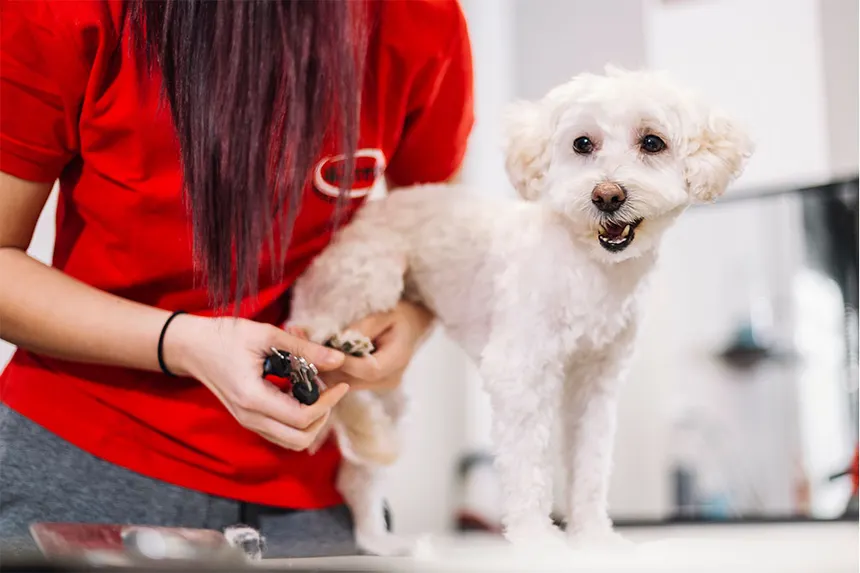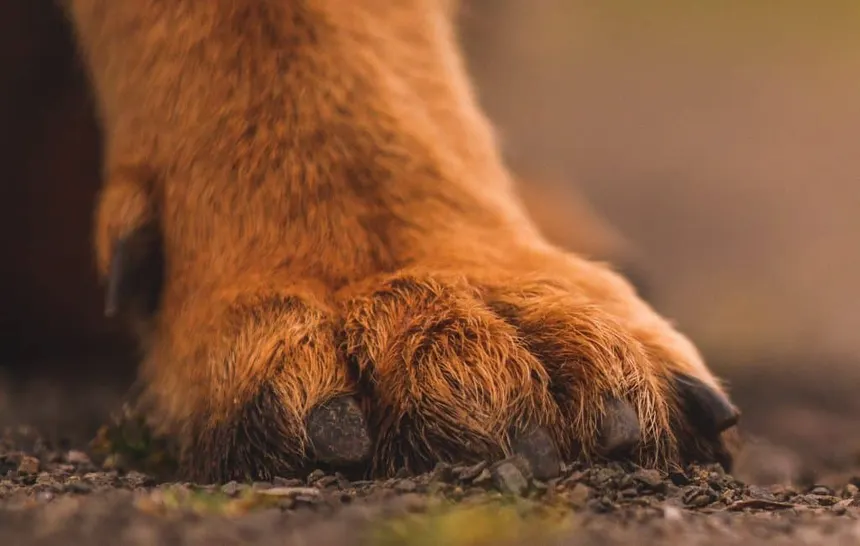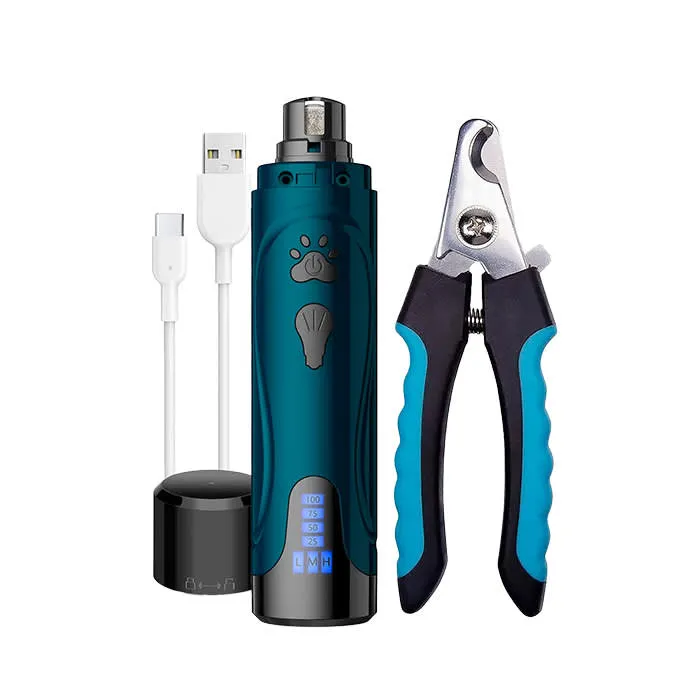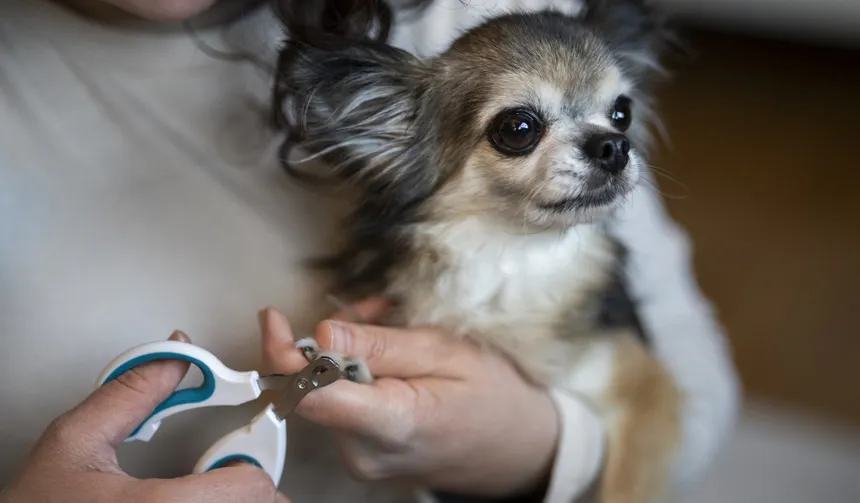Most dogs in Australia need their nails trimmed every 3–4 weeks. However, the exact frequency depends on your dog’s activity level, the surfaces they walk on, and how fast their nails grow.
Understanding the Ideal Nail Trimming Schedule for Australian Dogs

For most Australian pet owners, the right time to trim dog nails is every three to four weeks. Dogs that walk on hard surfaces like concrete may go a little longer due to natural wear, while indoor dogs or low-activity breeds may require trimming as often as every 1–2 weeks. The key? Monitor your dog’s nails — if you hear clicking on the floor, it’s time.
Why Nail Trimming Frequency Matters
Keeping your dog’s nails short isn’t just cosmetic. Long nails can cause:
- Joint misalignment and discomfort
- Altered posture, leading to long-term orthopedic issues
- Painful splitting or curling back into the paw pads
- Increased risk of injury during walks or play
Veterinarians across Australia agree: consistent trimming supports overall pet comfort, joint health, and mobility, especially in older dogs.
Dog Nail Trimming Frequency in Australia Based on Lifestyle
High-Activity Dogs on Hard Surfaces (e.g., city walks, beach paths)
- Natural nail wear occurs
- Trimming needed every 4–8 weeks
Moderately Active Dogs (mix of indoor/outdoor life)
- Some wear, but not enough to skip trims
- Recommended: every 3–4 weeks
Low-Activity or Senior Dogs (mostly indoor, soft surfaces)
- Nails grow unchecked
- Trimming required every 1–2 weeks
How to Tell It’s Time to Trim

Don’t wait until nails become visibly long. Here are clear signs your dog needs a trim:
- You hear clicking when they walk on tile or wood floors
- Nails touch the ground when your dog is standing still
- The nails curve or curl toward the paw pad
- Your dog shows hesitation to walk, limps, or shifts weight
- Their posture looks unnatural or strained
For a quick at-home test: have your dog stand. If the nails press against the floor, it’s time.
Dewclaw Trimming: Often Overlooked, Always Important

Dewclaws — the nails higher up on the leg — don’t touch the ground, meaning:
- They don’t experience natural wear
- Are more prone to overgrowth or breaking
- Can embed into skin if ignored
Check dewclaws weekly and trim as needed. Many vet visits for dewclaws result from neglect — a painful and avoidable mistake.
Tools of the Trade: Dog Nail Grinder vs Clipper

Clippers
- Quick and efficient
- Risk of cutting the quick (painful blood vessel inside the nail)
Grinders (e.g., Dremel)
- Slower but safer
- Smooth finish, especially on thick nails
Choose the tool based on your dog’s size, nail texture, and your comfort level. Many Australian dog owners prefer grinders for anxious dogs or those with black nails, where the quick is harder to see.
Step-by-Step: How to Trim Dog Nails Safely

- Choose a well-lit space and calm your dog.
- Use styptic powder nearby in case of bleeding.
- Hold paw firmly but gently.
- Trim just the tip — aim before the quick.
- With grinders: use short bursts and avoid heat buildup.
If your dog resists or you’re unsure, start with one nail per session. Reward with treats and praise to build a positive association.
Common Mistakes Aussie Pet Parents Make
- Waiting too long: leads to pain and posture issues
- Cutting too deep: hits the quick, causing trauma
- Only trimming when nails look long: by then, they’re overdue
- Ignoring dewclaws
- Assuming pavement will trim them enough
A popular belief is that walking on concrete “files” nails down — true to a point, but rarely sufficient for long-term maintenance.
When to Call a Professional
Not every pet parent is comfortable trimming nails — and that’s okay. Seek help if:
- Your dog has dark nails and you can’t see the quick
- They have a history of aggression or anxiety
- You’ve injured the quick in the past and are hesitant
- Your dog’s nails are badly overgrown
Careers Collectiv recommends consulting your local vet or certified groomer for nail trims, especially in tricky situations. Some groomers also teach owners safe trimming techniques.
Establishing a Grooming Routine for Australian Dog Owners
How Often Should a Dog Be Groomed? It depends on the breed, coat type, and lifestyle. Active dogs or those frequently outdoors often require more regular grooming to maintain coat health and hygiene.
Grooming Frequency Chart (by breed group):
Toy Breeds (e.g., Maltese, Yorkie): Every 3–4 weeks
Sporting Breeds (e.g., Spaniels, Setters): Every 6–8 weeks
Working Breeds (e.g., Doberman, Boxer): Every 8–12 weeks
Non-Sporting (e.g., Poodle, Bichon): Every 4–6 weeks
Herding (e.g., Collie, Aussie): Every 6–8 weeks
Hound (e.g., Beagle, Greyhound): Every 8–12 weeks
Mixed or Designer Breeds (e.g., Cavoodle): Every 4–6 weeks
These timelines serve as a helpful guide when answering the common question: “How Often Should a Dog Be Groomed?” Always consider your dog’s individual needs, activity level, and coat condition.
FAQs About Dog Nail Trimming in Australia
Is weekly trimming too much?
No — for some breeds, especially small or inactive dogs, it’s necessary. If the nails grow quickly and you avoid cutting the quick, it’s completely safe.
Can pavement wear replace trimming?
Not entirely. While pavement helps slow growth, it rarely prevents overgrowth — especially for dewclaws and rear nails.
How do you trim black nails without hitting the quick?
Use a grinder, go slowly, and stop when the inside of the nail begins to look gray or pinkish. When unsure, seek help from a groomer or vet.
Nail Care and Your Dog’s Long-Term Health
Proper nail care isn’t optional — it’s essential. Long nails affect more than just paw aesthetics. Overgrown nails change the biomechanics of how your dog walks, potentially causing pain, arthritis, and joint damage over time.
Trimming regularly ensures:
- Healthy posture
- Reduced risk of injury or infection
- Easier mobility, especially in senior dogs
- Prevention of costly vet visits due to broken or embedded nails